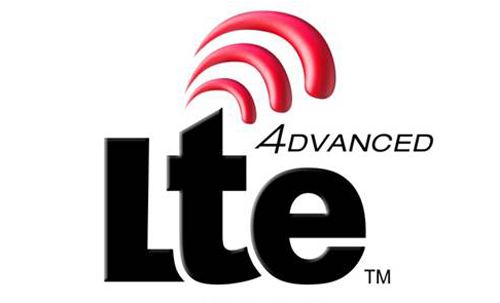In response to growing demand for mobile data, Qualcomm's subsidiary, Qualcomm Technologies Inc. (QTI), is expanding LTE to unlicensed spectrum (LTE-U) and incorporating the technology into the latest small base station solutions, as well as action The RF transceiver of the device. QTI also announced an over-the-air (OTA) test to confirm that multiple LTE-Us and Wi-Fi access points in the unlicensed spectrum can coexist under extreme load conditions. QTI will present its latest solutions at MWC 2015, including several LTE-U demonstrations.
LTE Advanced expands to unlicensed spectrum, enabling operators to meet increased traffic demands while enhancing mobile broadband services. LTE-U expands carrier services and uses less-crowded 5 GHz unlicensed bands. The coexistence function allows a wide range of users and technologies to access the frequency band to share fairly.
Benefits of extending LTE to unlicensed spectrum include anchors set to licensed spectrum to provide reliable and predictable performance, smooth user experience and mobile experience, performance superior to LTE or Wi-Fi independent applications, support for a wider range With capacity, as well as increasing the carrier's mobile broadband capacity.

Small base station solution integrates LTE-U
For the first time, QTI has included LTE-U in a small base station system single chip to expand capacity and expand LTE networks. The small-scale base station system single-chip series FSM99xx will support LTE-U and is expected to be available in the second half of 2015. The FSM99xx solution integrates Qualcomm's 3G and 4G technologies and supports Qualcomm VIVE 802.11ac/n Wi-Fi to create a full-featured small base station that delivers outstanding performance while reducing power consumption.
In addition, QTI also announced the first RF solution FTR8950 for small base stations to meet LTE-U implementation and network snooping requirements on the 5 GHz unlicensed band. QTI's latest small base station RF transceivers continue from the FTR8900 RF chip, supporting digital pre-distortion and proprietary network listening.
The first commercial LTE-U RF transceiver
QTI introduces the first RF-specific RF solution WTR3950 to meet the needs of LTE-U operating in the unlicensed 5GHz band. QTI's latest 28nm RF transceivers offer advanced component packaging and will be available in commercial samples starting in the second half of 2015. .
The WTR3950 is based on the successful commercialization of single-chip RF transceivers supporting LTE carrier aggregation and continues QTI's position in LTE Advanced technology RF products. The WTR3950 is paired with the first single-chip Cat 6 carrier aggregation 28nm RF WTR3925 that spans both authorized and unlicensed spectrum and supports carrier aggregation up to 3x20 MHz. The WTR3950 also supports up to 40 MHz in-band continuous carrier aggregation in the 5 GHz band.
Successfully tested the coexistence of LTE-U and Wi-Fi
In order to maximize the benefits of LTE-U, it must operate in harmony with billions of existing Wi-Fi devices. QTI is working hard to integrate LTE and Wi-Fi at the system level, and make good use of various protection functions to ensure LTE-U and Wi. -Fi network coexistence best. Users can connect with their personal preferences, and operators can evenly allocate all available spectrum to increase capacity. The network configuration and operation of the carrier will be easier and more cost-effective, and the consumer experience will be smoother.
At the QTI headquarters in San Diego, engineers used multiple Wi-Fi access points and advanced networks built on LTE-U small base stations to deploy in a single channel in the unlicensed 5 GHz band to assess the actual situation in various scenarios. Performance and interference. After various tests emulating extremely dense radio conditions, the results show that LTE-U performance is not only better than LTE or Wi-Fi alone, but also coexist with Wi-Fi. In many scenarios, due to the efficient way LTE uses unlicensed spectrum, traffic from Wi-Fi to LTE-U can improve the performance of Wi-Fi users.
The test scenarios include the “accommodation work cycle†coexistence, and the “listen to listen†(LBT) technology. The former is suitable for the US, China, South Korea, etc., and adopts LTE Release 10 and above for commercial LTE-U construction; the latter appears in the upcoming In the LTE standard Release 13 work plan, it is expected to define an LTE-U version called "Auxiliary Access Access" (LAA), which is suitable for implementation in other regions such as Europe and Japan.
QTI will showcase the LTE-U and Wi-Fi convergence sharing case at MWC 2015, and will participate in multiple LTE-U live demonstrations using Qualcomm user test equipment, as well as Rohde &, a manufacturer and measurement equipment manufacturer including KT. Schwarz, along with a number of infrastructure vendors, including Alcatel-Lucent, Ericsson, Huawei, Nokia Networks, Samsung, etc.
Fast Recovery Diode is a semiconductor device which possesses short reverse recovery time for rectification purpose at high frequency. A quick recovery time is crucial for rectification of high-frequency AC signal. Diodes are mostly used in rectifiers because they possess ultra-high switching speed.
Fast Recovery Diode,Fast Recovery Rectifier Diode,Super Fast Recovery Diode,Fast Recovery Epitaxial Diode,Recovery Diode
YANGZHOU POSITIONING TECH CO., LTD. , https://www.cnfudatech.com